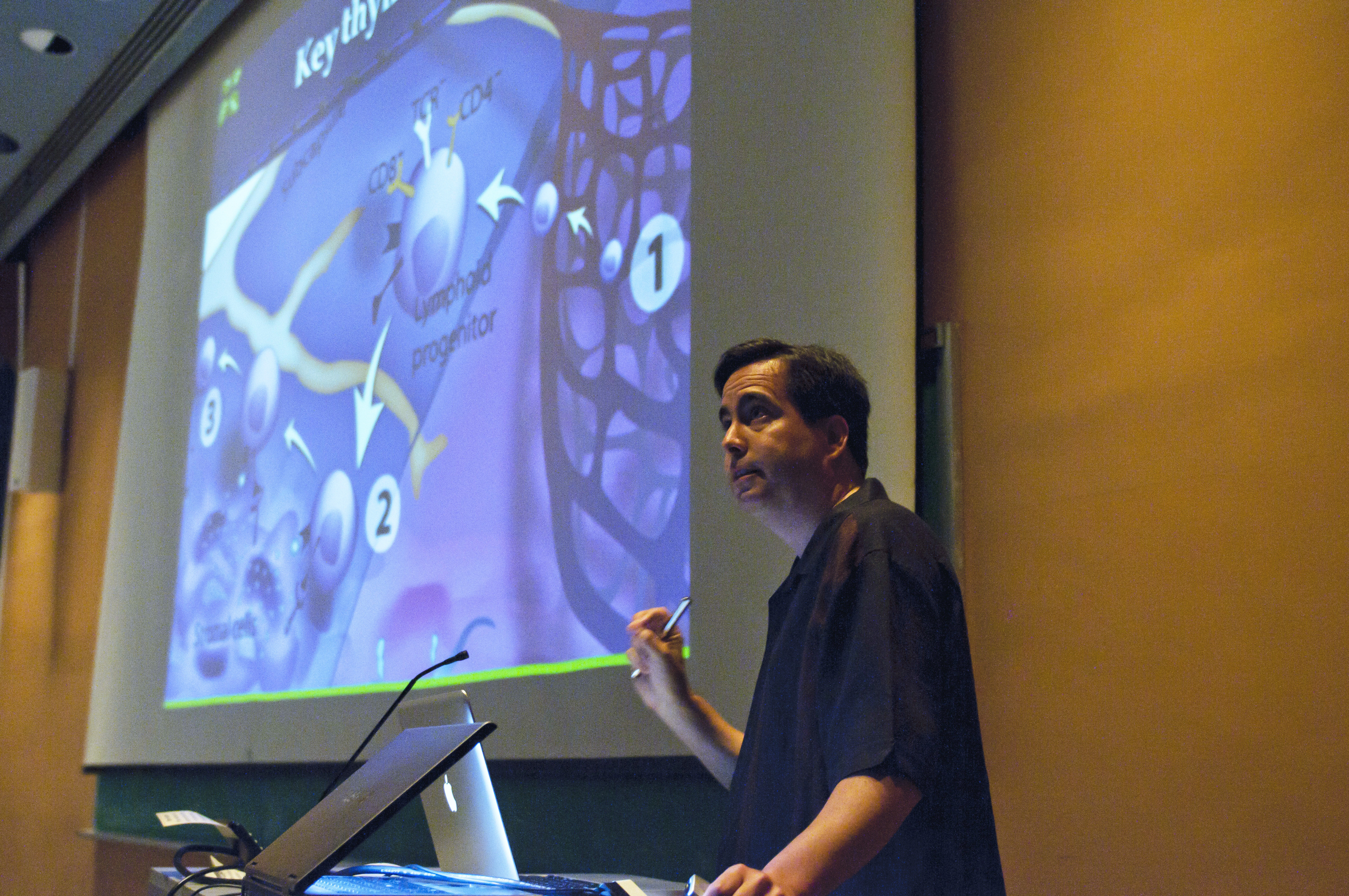Main Stage
By Stephanie Roberts
A brimful lecture hall was the setting. More than 100 researchers, staff and students, some perched on steps for want of chairs, the audience. The event? A celebration of the science of the Centre for Research in Image-Guided Therapeutics (CeRIGT, pronounced see-rite) at Sunnybrook Research Institute (SRI).
Dr. Michael Julius, vice-president of research at Sunnybrook, opened the first CeRIGT Research Day. He welcomed David Leslie, chair of the Board of Sunnybrook, and Dr. Barry McLellan, president and CEO. Each congratulated the attendees, notably those who wrote the proposal that won the approval of the Canada Foundation for Innovation, and with it a hefty investment to establish the centre.
United in Approval
Leslie recalled the day the Board accepted the award, a precondition of finalizing the grant. “Why was the vote unanimous? Because there is not a single doubt that the dedicated group of scientists who are working within this centre will continue to make great strides in our collective quest to invent the future of health care,” he said.
The benefits of the research will reverberate beyond the hospital, said McLellan in his address: “Such is the nature of medical innovation that, once harnessed, it has the power to transform health care globally. For patients, we’re talking about technology that will enable doctors to do surgery without cutting through skin; diagnostic tools that will find disease much sooner, and with greater accuracy; and biological and tailored drug therapies that will advance us from the ‘one-size-fits all’ approach.”
Investment Begets Growth
Julius emphasized the mandate of SRI: discovery through to clinical impact, for the benefit of patients, government and industry, and by extension all society. “The Centre for Research in Image-Guided Therapeutics is essential to our capacity to achieve this remit, and I am clearly not the only one who thinks so. We have the confidence of the federal government with their $74.6-million investment into the centre; added to that is funding we have leveraged from the private sector and the provincial government.”
The award will create a home for CeRIGT on the top two floors of the hospital’s main wing, supported by other labs nearby, including in S wing—to hold new imaging equipment, like a 7T magnetic resonance imaging (MRI) system and 320-slice computed tomography scanner—and in C wing—to house a 3-D tissue pathology lab.
Dr. Terry Peters from Robarts Research Institute gave the keynote lecture on challenges and opportunities in image-guided therapeutics. Following this, 14 researchers from SRI and one from the University Health Network presented their work in sessions corresponding to each of the centre’s four platforms: the translational, preclinical and clinical research facilities; and the treatment planning, analysis and evaluation facility.
Results Now
It was evident that although the facilities are still being built, SRI scientists aren’t waiting for the hard hats to be packed away.
From the research program of brain sciences, Dr. Sandra Black, its director, talked about work in progress. Projects include using functional MRI to create a “brain map” of behaviour like fastening a button after someone has had a stroke; using structural MRI to understand better Alzheimer’s disease; and exploring the utility of focused ultrasound for treatment-resistant depression.
Dr. Kullervo Hynynen, director of imaging at SRI and CeRIGT’s project leader, underlined the rationale for establishing the centre here, in a hospital-based research institute. He said that if the aim is not just to make discoveries, but also to get them to patients, then integration between clinicians and scientists is essential. As the day came to an end, Hynynen invited those interested in collaboration to contact him or any of the centre’s researchers.






